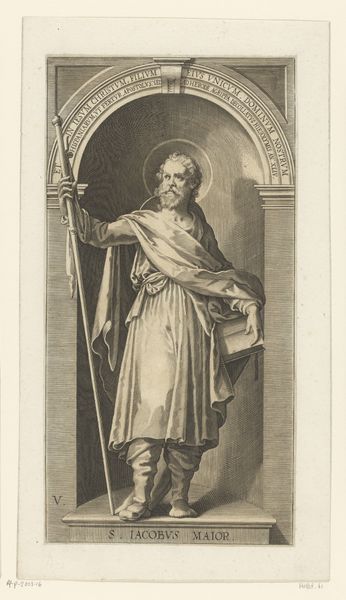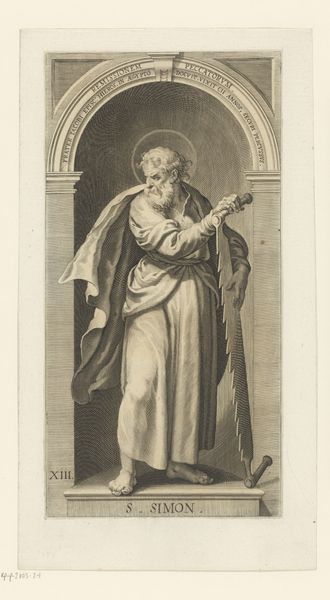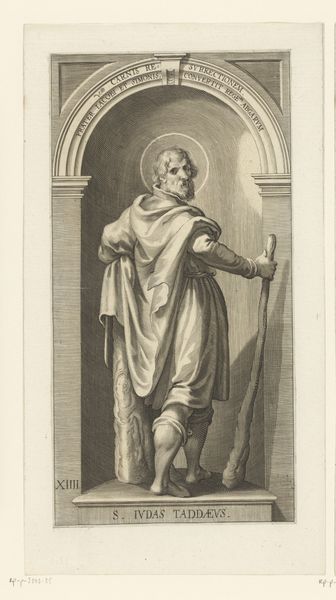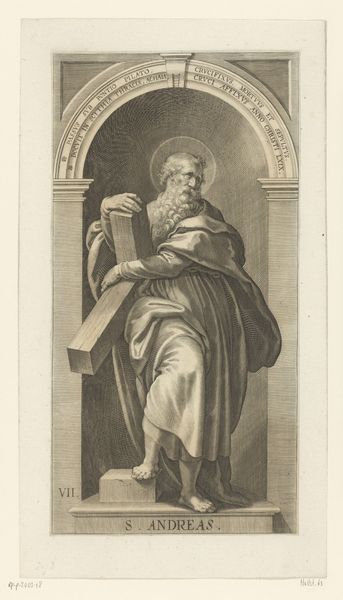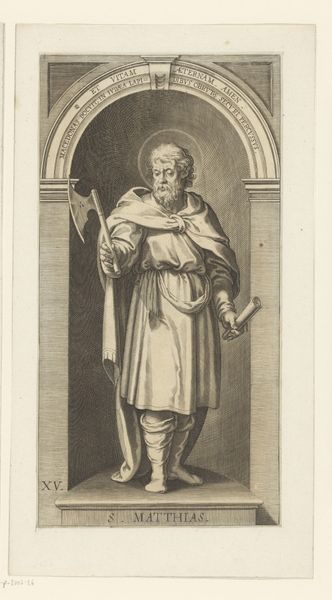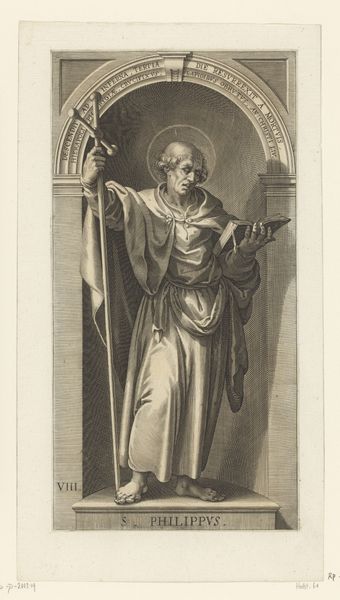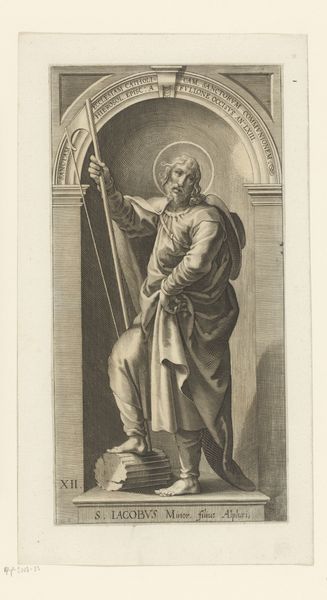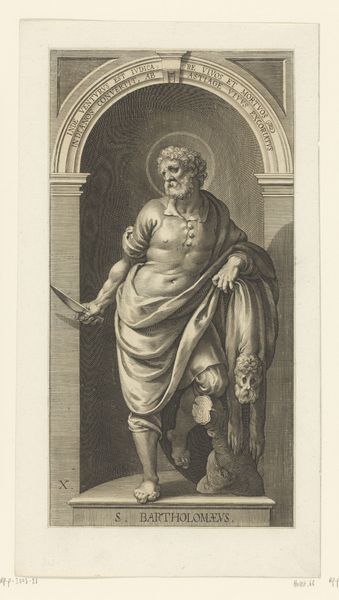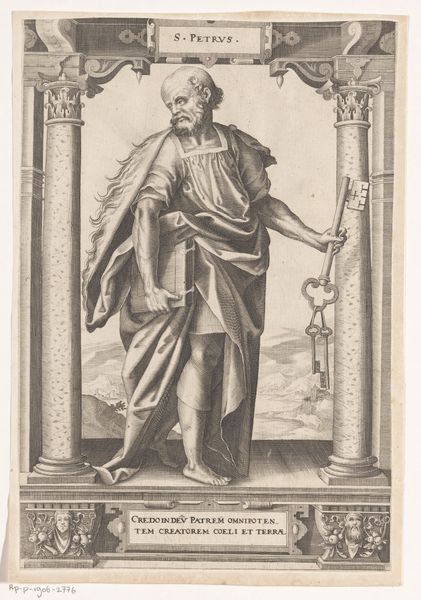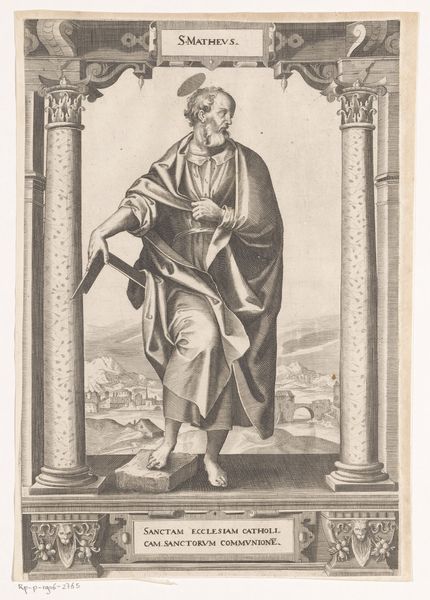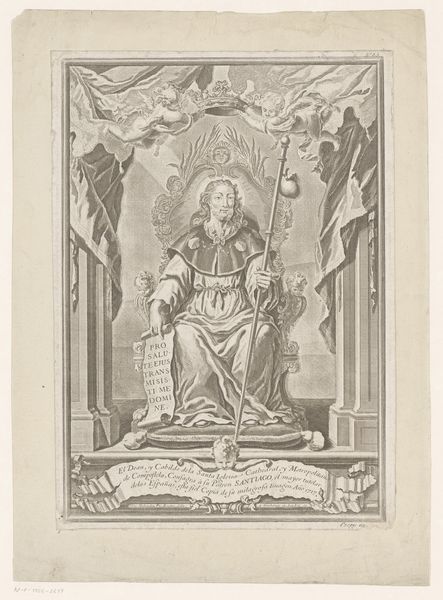
print, etching, engraving
#
portrait
#
baroque
# print
#
etching
#
old engraving style
#
history-painting
#
engraving
Dimensions: height 302 mm, width 157 mm
Copyright: Rijks Museum: Open Domain
Lucas Kilian created this engraving of Saint Peter in Augsburg, Germany, sometime in the early 17th century. Kilian was a printmaker in a family of artists who were active in Augsburg's artistic and commercial life. This image deploys an established visual language for representing the Apostle Peter. The keys he holds refer to Christ's designation of Peter as the "rock" upon which the church would be built, giving him the "keys to the kingdom of heaven." Set within an architectural frame inscribed with Latin text referencing God as the creator, Peter is positioned as an intercessor between heaven and earth. The image reflects the importance of the Catholic Church in Augsburg, a site of religious conflict during the Reformation. The artist's choice to represent St. Peter suggests an allegiance to the Catholic faith. Understanding this artwork requires a knowledge of religious history, the history of Augsburg, and the conventions of religious portraiture. Research into these fields provides invaluable insights into the social and institutional context in which the work was created.
Comments
No comments
Be the first to comment and join the conversation on the ultimate creative platform.
